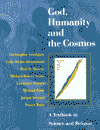Evidence for a Big Bang?Taking the Big Bang as our educated guess about the origin of the universe, we naturally ask what would such a universe look like? Can we deduce potential observations from the hypothesis of a primordial fireball? The answer is 'yes.' Since light travels at a finite velocity, observations of distant objects are also observations of conditions in the past. In the distant past, the universe was smaller and therefore denser and hotter than it is today. In the 1940s, George Gamow and his colleagues had predicted that the heat from the Big Bang should have left a trace of itself in the form of microwave radiation spread evenly across the sky. The most convincing evidence for the Big Bang came from the accidental discovery of this radiation in 1965. Two young American astronomers, Penzias and Wilson, were attempting to pioneer astronomy in the microwave part of the spectrum. They picked up a very faint signal which seemed to be coming from every part of the sky. At first they thought it was a problem with the telescope. Only when they had thoroughly checked all their equipment did the full significance of their observation became apparent. The strength of the radiation discovered by Penzias and Wilson was compatible with the predictions of Big Bang cosmology. Further evidence for the Big Bang comes from the abundance of the light elements. According to calculations, all of the deuterium (the stable heavy isotope of hydrogen) and most of the helium in the universe should have been made in the first few minutes of the Big Bang. The abundance of primordial deuterium and helium deduced from observations agrees with these predictions. For clusters of galaxies to have formed in some places and not others, the initial distribution of matter must have been slightly lumpy, and this should have resulted in slight differences in the temperature of the cosmic background radiation in different directions. In 1992, the Cosmic Background Explorer (COBE) satellite discovered tiny temperature differences that agreed with the predictions of the Big Bang theory. These discoveries were subsequently confirmed and extended by more recent experiments, and even more precise observations are in progress. In the mid-1990s there was an "age crisis" in cosmology. It is possible to deduce the amount of time since the Big Bang by extrapolating backward from the rate of expansion today, but it appeared that the oldest stars were older than that. But better measurement of the distances to these old star clusters reduced the ages deduced for these old stars, and the recent discovery that the expansion of the universe has been accelerating, increased the estimated time since the Big Bang. As a result, there is now excellent agreement: the Big Bang occurred about 14 billion years ago. (This topic updated courtesy of Joel Primack)
Email
link | Feedback |
Contributed by: Dr. Christopher Southgate |




